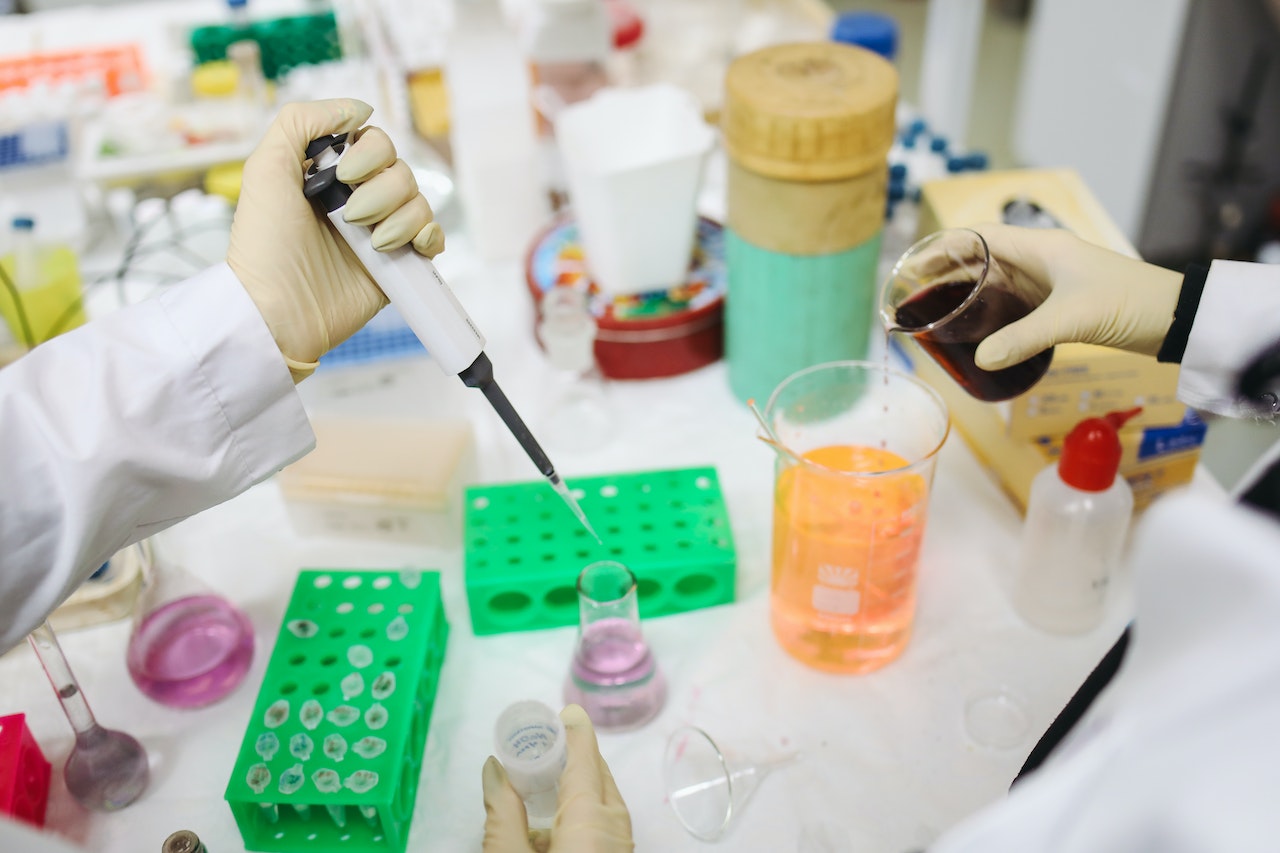Chemistry is an integral part of our daily lives, from the food we eat to the clothes we wear. It is through the science of chemistry that we can understand the composition of the world around us and how it interacts. In this article, we’ll explore some of the ways chemistry impacts our daily lives and examine 12 examples of chemistry in everyday life that you may have never considered. From the chemistry of cooking to the chemistry of cleaning products, we’ll take a closer look at the science behind the products we use daily, and gain a greater appreciation for the role chemistry plays in our lives. we will discuss Chemistry in Everyday Life.
What is Chemistry?
Chemistry examines the physical properties, chemical makeup, and conduct of matter. It explores how matter interacts with other matter, and how it can be transformed through chemical reactions. Chemistry is a vast field that encompasses everything from the composition of atoms to the structure of molecules and the behavior of chemical compounds.
Introduction to Chemistry in Everyday Life
Chemistry is an integral part of our daily lives, from the food we eat to the products we use. Chemistry is the study of matter and the changes it undergoes, and it plays a crucial role in shaping the world we live in. From the clothes we wear to the cars we drive, we are constantly surrounded by chemicals and chemical reactions. In this article, we will explore how chemistry impacts our daily lives, from the food we eat to the products we use. There are many importance of Chemistry in Everyday Life. First of all, discuss Chemistry and then we will explain Chemistry in Everyday Life.
Chemistry of Food and Beverages
It plays a fundamental role in the food and beverage industry, from the way we cook our food to the way we make our coffee.
Chemistry of Cooking
The chemistry of cooking is a complex and fascinating subject. During the cooking process, we can reduce complicated molecules into simpler components while preparing meals. This process is known as chemical decomposition. For example, when we cook an egg, the heat causes the proteins in the egg to denature and coagulate, which transforms the liquid egg into a solid.
Chemistry of Coffee and Tea
Coffee and tea are some of the most popular beverages in the world, and they both have complex chemistry behind their unique flavors and aromas. For example, the bitterness of coffee is due to the presence of compounds known as chlorogenic acids, while the floral aroma of tea is due to the presence of volatile organic compounds known as terpenes.
Chemistry of Alcoholic Beverages
Alcoholic beverages such as beer and wine are also the products of complex chemical reactions. The fermentation process that transforms sugars into alcohol is a classic example of a chemical reaction, and the flavors and aromas of different alcoholic beverages are due to the presence of different compounds such as esters, aldehydes, and ketones.
Chemistry in Personal Care Products
It is also crucial to the development and production of personal care products such as perfumes, cosmetics, soaps, and shampoos.
Chemistry of Perfumes and Fragrances
The chemistry of perfumes and fragrances is a complex and fascinating subject. The scents we associate with different perfumes and fragrances are due to the presence of complex mixtures of volatile organic compounds, which can be derived from a variety of natural and synthetic sources.
Chemistry of Cosmetics
The chemistry of cosmetics is equally complex. Products such as lipsticks, eye shadows, and foundations rely on a variety of chemicals to achieve different colors, textures, and finishes. For example, pigments such as titanium dioxide and iron oxide are often used to create different colors, and emulsifiers such as glyceryl stearate create smooth and creamy textures.
Chemistry of Soaps and Shampoos
Soaps and shampoos are also products of complex chemical reactions. For example, soaps combine fats or oils with a strong base such as sodium hydroxide. This process, known as saponification, produces soap molecules that can dissolve dirt and grease. Shampoos, on the other hand, rely on a variety of chemicals to create foam, clean hair, and condition it.
Chemistry in Cleaning Products
It is also crucial to the development and production of cleaning products such as laundry detergents and household cleaners.

Photo by Polina Tankilevitch, Pexels
Chemistry of Laundry Detergents
The chemistry of laundry detergents is a complex and fascinating subject. Detergents rely on a variety of chemicals to clean clothes, including surfactants, enzymes, and builders. Surfactants are molecules that can dissolve dirt and grease, while enzymes can break down proteins and other organic compounds. Builders, such as sodium carbonate, can help to soften water and enhance the cleaning power of other components.
Chemistry of Household Cleaners
Household cleaners also rely on complex chemical reactions to achieve their cleaning power. For example, bleach works by oxidizing and breaking down organic compounds such as bacteria and viruses. Similarly, disinfectants rely on a variety of chemical compounds to kill microbes and sanitize surfaces.
How Chemistry Makes Cleaning Easier?
Chemistry has also made cleaning easier and more convenient. For example, the invention of detergents and other cleaning products has made it possible to clean clothes and surfaces more effectively and with less effort. Other inventions, such as vacuum and steam cleaners, have also made it easier to keep our homes clean and hygienic. Chemistry in Medicines and Drugs
When we pop a pill to alleviate a headache or take an antibiotic to fight an infection, we may not think about the chemistry occurring within our bodies. However, chemistry plays a crucial role in the development and efficacy of medicines and drugs.
Chemistry of Painkillers
The chemistry of painkillers involves the manipulation of chemical structures to optimize their effectiveness and minimize side effects. Painkillers can be classified into different categories, such as opioids, nonsteroidal anti-inflammatory drugs (NSAIDs), and acetaminophen. Each category works differently and has a unique molecular structure.
Chemistry of Antibiotics
Antibiotics are compounds that kill or inhibit the growth of bacteria. Their chemistry involves targeting specific components of bacterial cells or interfering with their metabolic processes. Examples of antibiotics include penicillin, tetracycline, and erythromycin.
Chemistry of Fertilizers
Fertilizers are compounds that provide essential nutrients for plant growth. They contain a mix of nitrogen, phosphorus, and potassium, among other elements. The chemistry of fertilizers involves optimizing the nutrient mix, balancing the soil’s pH level, and improving water retention.
How Chemistry Helps Plants Grow
Chemistry helps plants grow by understanding the chemical reactions that occur during photosynthesis and respiration. These reactions involve the conversion of light energy into chemical energy that plants can use to grow. Understanding these reactions has led to the development of techniques like hydroponics and genetic modification.
Chemistry of Food Additives
Food additives are compounds added to food to enhance its flavor, texture, or shelf-life. The chemistry of food additives involves understanding how they interact with other food components, such as proteins and fats, to create the desired effect. Examples of food additives include emulsifiers, preservatives, and artificial sweeteners.
Chemistry in Plastics and Materials
Chemistry is integral to the production of a wide range of materials, including plastics, synthetic materials, and building materials.
How Plastics Are Made?
Plastics are made by polymerizing monomers, which are small molecules, into long chains of polymers. The chemistry of plastics involves controlling the properties of the monomers and the polymerization process to produce plastics with specific properties, such as strength, flexibility, and transparency.
Chemistry of Synthetic Materials
Synthetic materials are produced by manipulating natural sources like petroleum and wood through chemical reactions. The chemistry of synthetic materials involves understanding the chemical properties of the starting materials and manipulating them to create new materials with unique properties, such as durability and flame resistance.
How Chemistry is Used in Building Materials?
Chemistry plays a crucial role in the production of building materials such as cement, glass, and steel. For example, cement is made by heating limestone and clay to produce calcium silicate, which hardens when mixed with water. Understanding the chemistry of these materials has led to the development of new, more durable, and environmentally friendly products.

Chemistry of Laundry Detergents, Painkillers, Perfumes, Cosmetics, Fertilizers
Why is Chemistry Important in Daily Life?
Chemistry is important in daily life because it helps us understand how the world around us works. From the food we eat to the products we use, chemistry plays a crucial role in shaping our daily experiences. Understanding chemistry can help us make informed decisions about our health, our environment, and our society. It can also help us develop new drugs, materials, and technologies that can improve our lives and make the world a better place.
Frequently Asked Questions
Why is it important to understand chemistry in everyday life?
Understanding chemistry in everyday life can help you make more informed decisions about the products you use and the food you eat. It can also help you understand the science behind why products work the way they do, which can be helpful when troubleshooting problems or selecting products that meet your specific needs. Therefore Chemistry in Everyday Life is very important for us.
How does chemistry impact food production?
Chemistry is essential to food production, from fertilizers that help grow crops to food additives that preserve and enhance flavor. By understanding the chemistry behind the food we eat, we can make more informed decisions about our diets.
What are some examples of chemistry in personal care products?
Chemistry plays a significant role in personal care products. For example, the chemistry of soaps and shampoos helps these products effectively remove dirt and oil from our skin and hair. The chemistry of perfumes and fragrances helps create pleasant scents, while the chemistry of cosmetics helps create the desired texture and color.
How does chemistry impact drug development?
Chemistry is essential to drug development, from understanding the chemical structure of the human body to creating medications that work effectively with those structures. By understanding the chemistry behind drug development, we can gain a greater appreciation for the advances in medicine that improve our quality of life.
Conclusion and Importance of Chemistry in Daily Life
Chemistry is all around us, from the medicines we take to the clothes we wear. Understanding the role of chemistry in everyday life is essential for appreciating its importance and advancing our understanding of the world.
Summary of Key Points
Chemistry plays a vital role in medicine and drug development, agriculture and food production, and material science. Understanding the chemistry of these areas can lead to enhanced efficiency, efficacy, and sustainability.
Why Chemistry is Essential in Daily Life
Chemistry is essential for advancing our understanding of the world and improving our quality of life. From enhancing plant growth to producing new materials, chemistry has the potential to solve many of the world’s challenges, making it an indispensable discipline.
Conclusion
The science of chemistry impacts far more than we typically realize. The food we eat, the products we use, and the medications we take all rely on the principles of chemistry. By gaining a better understanding of chemistry in everyday life, we can learn to appreciate the science behind the products we use and make more informed decisions about the items we purchase. From convenience to safety, chemistry is essential to our daily lives.
Resource
10 Examples of Chemistry All Around You
What is the role of chemistry in everyday life?
Chemistry in Everyday Life: Importance, Examples & Sample Questions

